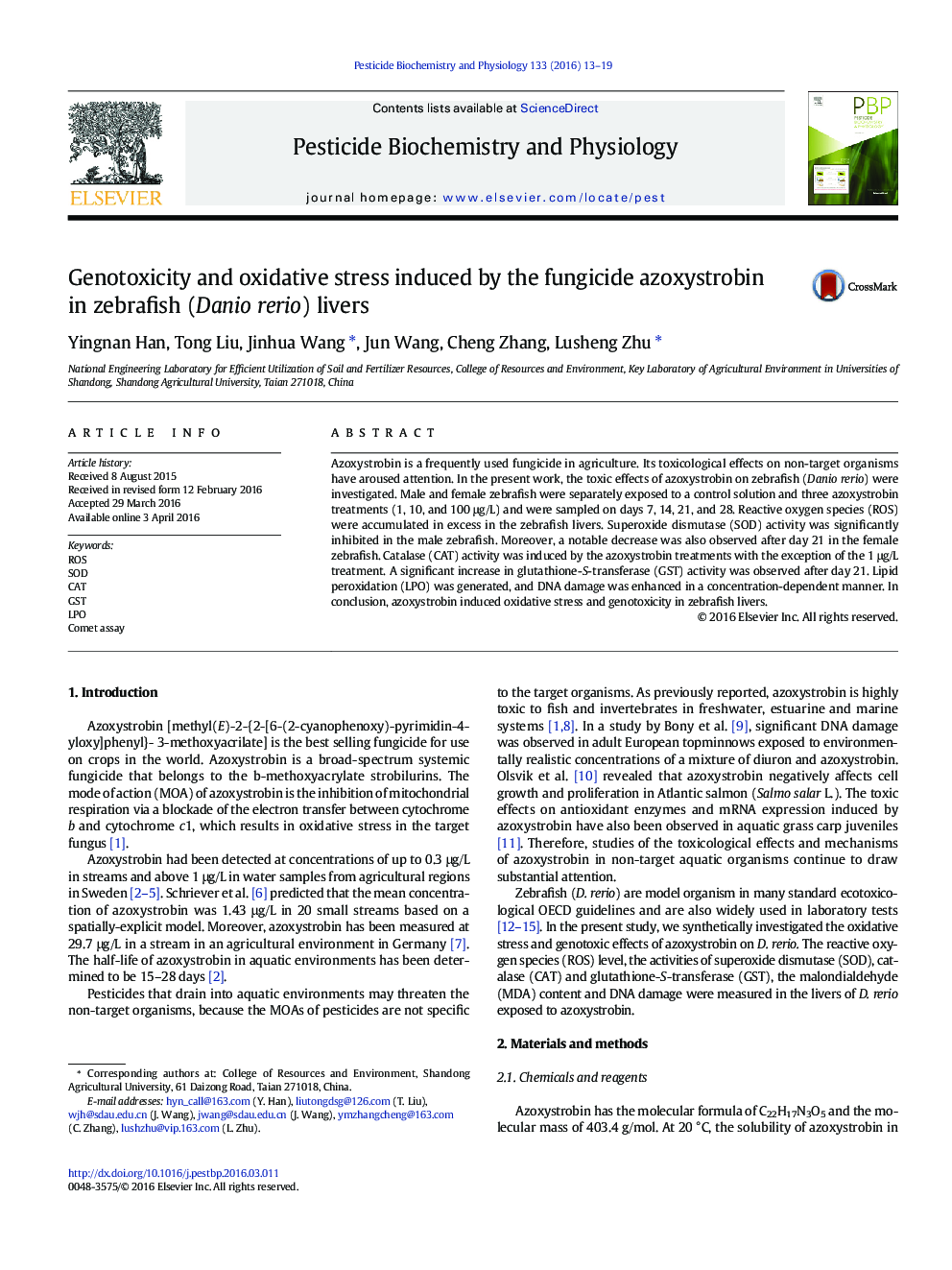| Article ID | Journal | Published Year | Pages | File Type |
|---|---|---|---|---|
| 5514903 | Pesticide Biochemistry and Physiology | 2016 | 7 Pages |
â¢Azoxystrobin induced oxidative stress and genotoxicity in zebrafish livers.â¢ROS was generated in excess.â¢SOD was inhibited, CAT and GST were stimulated at most azoxystrobin treatments.â¢Lipid peroxidation increased as a consequence of oxidative stress.â¢The excess ROS was one of the causes for the DNA damage.
Azoxystrobin is a frequently used fungicide in agriculture. Its toxicological effects on non-target organisms have aroused attention. In the present work, the toxic effects of azoxystrobin on zebrafish (Danio rerio) were investigated. Male and female zebrafish were separately exposed to a control solution and three azoxystrobin treatments (1, 10, and 100 μg/L) and were sampled on days 7, 14, 21, and 28. Reactive oxygen species (ROS) were accumulated in excess in the zebrafish livers. Superoxide dismutase (SOD) activity was significantly inhibited in the male zebrafish. Moreover, a notable decrease was also observed after day 21 in the female zebrafish. Catalase (CAT) activity was induced by the azoxystrobin treatments with the exception of the 1 μg/L treatment. A significant increase in glutathione-S-transferase (GST) activity was observed after day 21. Lipid peroxidation (LPO) was generated, and DNA damage was enhanced in a concentration-dependent manner. In conclusion, azoxystrobin induced oxidative stress and genotoxicity in zebrafish livers.
Graphical abstractsDownload full-size image
